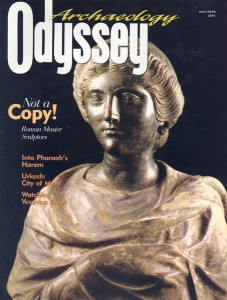Trait Clusters, or How to Find a Hurrian City
Sidebar to: City of Myth
We have been calling Tell Mozan/Urkesh an Early Bronze Age (3150–2200 B.C.) Hurrian city. But how can you identify an archaeological site as belonging to a specific ethnic group?
Material culture is of little use, for there is no broad consensus as to what, if anything, might be distinctively “Hurrian” in ceramic manufacture, artistic style, architectural design—in the things you find in excavations. How can you identify a city’s material remains as Hurrian until you’ve already found a Hurrian city to use as an exemplar?
Ethnic solidarity involves the awareness of a special type of self-identity on the part of a social group. It spans many generations. It is not necessarily linked to specific organizational mechanisms, such as an administrative apparatus. It develops an ideology of solidarity that is rooted in kinship. And it is rich in symbols that affirm its cohesiveness.
All these factors contribute to the development of shared cultural traits, which we can observe and recognize. However, no single trait, in and of itself, defines ethnic identity. Worshiping a certain deity, speaking a common language, cooking a particular dish or wearing a distinctive garment may be powerful symbols of ethnicity, but none alone constitutes ethnic identity. What is specifically ethnic involves clusters of traits. There might also come a point when a trait cluster evolves into something quite different and, therefore, ethnic identification alters—for example, from English to American or Australian. The point is that ethnic identity is a slippery concept, especially in dealing with the material remains of a long-gone civilization.
Already a library member? Log in here.
Institution user? Log in with your IP address.

